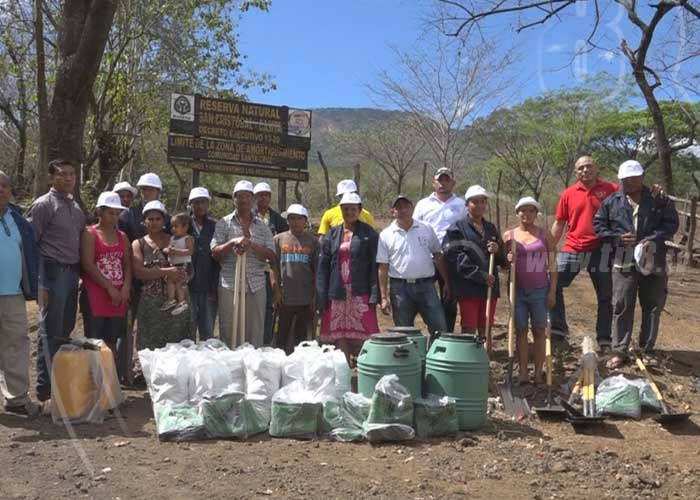Normally when designing operations at the Inter-American Development Bank (IDB), we analyze the institutional capacity of the executing agency and corresponding national authorities in order to mitigate environmental and social risks. But, is it possible that we’re keeping local authorities and communities –who are the first to feel the impacts and to supervise mitigation measures– in the dark? During preparation of a project in Nicaragua, we had the chance to observe how environmental safeguard policies put these key players in the spotlight.

The IDB’s portfolio of projects in Nicaragua includes a geothermal exploration program near the Cosigüina volcano in the peninsula of the same name located at the tri-border gulf (El Salvador, Honduras, and Nicaragua.) This is one of the country’s most isolated and remote areas, with virtually no access to electricity, clean water, or sanitation services. However, the geothermal program has the potential to generate around 40 MW of electricity to help meet the country’s energy demand.
Located in the Cosigüina Volcano Natural Reserve (RNVC), the operation has been classified as “Category A by the Banks’s environmental safeguard policies, and Category I under national legislation. Over the years, the degradation of RNVC’s forest cover has led to a fragmented dry forest habitat which is now home to only 14 specimens of scarlet macaws or Ara macao cyanoptera, a type of parrot locally known as lapa colorada.

Additionally, the Peninsula of Cosigüina, where the RNVC is located, is undergoing alternate periods of severe droughts and floods – two phenomena that have intensified due to climate change. A combination of degraded forest cover, extreme climate events, and water demand from farmlands has degraded the soil and superficial runoff, which are vital to sustain ecosystem services for local populations.
When the IDB’s Environmental and Social Safeguards (ESG) Unit took these issues into consideration, it determined that introducing the geothermal exploration program to the RNVC had the potential to further degrade both the dry forest habitat and of freshwater sources. The ESG team and IDB’s representatives in Nicaragua focused their efforts on social and environmental management. The Environmental and Social Action Plan (ESAP) we’ve developed along with the executing agency includes an Integrated Biodiversity Action Plan that requires, among other things:
- updating RNVC’s Management Plan;
- creating fire brigades within the park;
- an extensive reforestation program; and
- if necessary, creating a Payment for Ecosystem Services scheme for local communities.
In addition to implementing the Action Plan with the executing agency and the Ministry of Natural Resources (MARENA), through various field visits we were delighted to find a local community that was organized and deeply committed to social and environmental management. There was already a municipal Environmental Management Unit in place, consisting of two officials covering 1,275 km² of the territory, and a voluntary fire brigade; there were already ongoing plans to develop a Payment for Ecosystem Services scheme; and there already existed a multi-stakeholder Working Group with its own Action Plan and budget. The only thing missing was for the geothermal project’s executing agency to insert itself in this process. Despite significant financial and logistical limitations, local stakeholders continue to be absolutely proactive and appreciated by the community for their commitment and performance in the field.
Notwithstanding its many adversities and not-too-promising macroeconomic indicators, Nicaragua should feel extremely proud of its community-based organizations, the product of sociopolitical processes undergone since the ‘80s. The communities in Cosigüina are a splendid example to remind us that we should always incorporate local stakeholders during the project cycle and not simply settle for the capabilities of our counterparts at the national level. In this case, the organized community is the entity best qualified to oversee that the policies put forward by the IDB are applied, and guarantee sustainable development.
This project has taught us a lesson: when we design projects, we may be overlooking the importance of local efforts. While it is true that we concentrate our energies on talking to national authorities, which are after all the ones responsible for coordinating on-the-ground work, it is also true that the input provided to the ESAP by the community committees with a longstanding tradition of territorial management, and by local authorities, was extremely valuable.


Leave a Reply